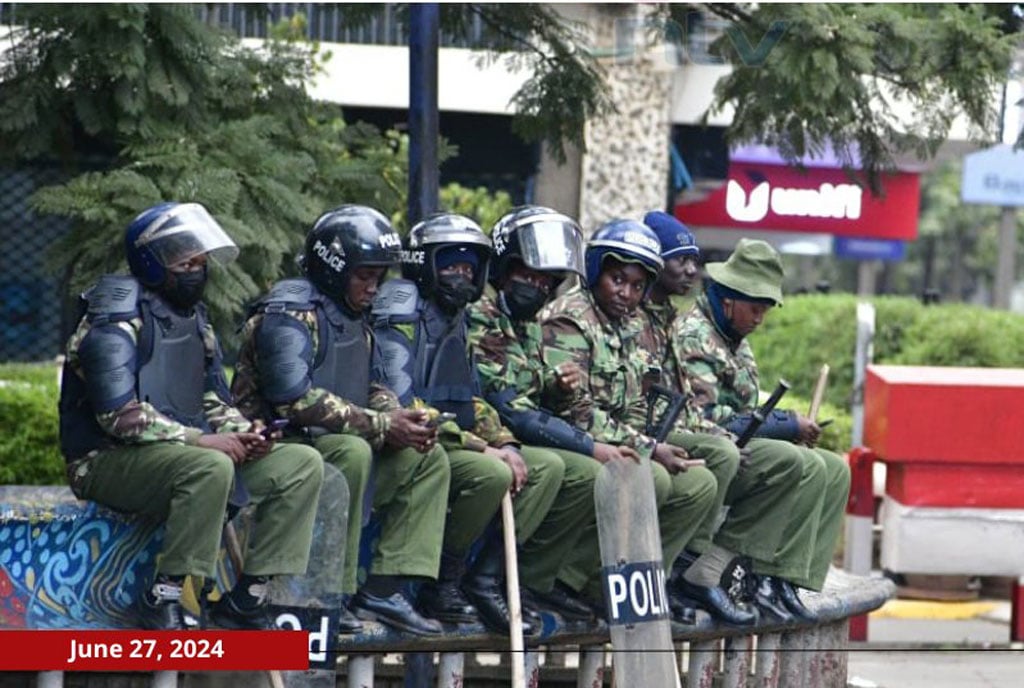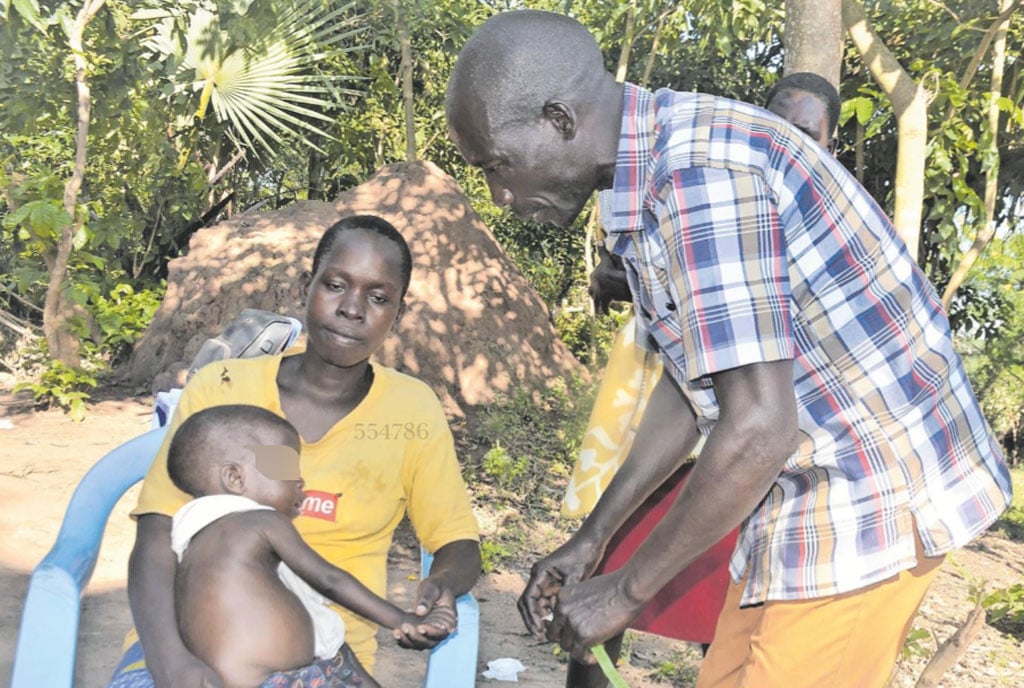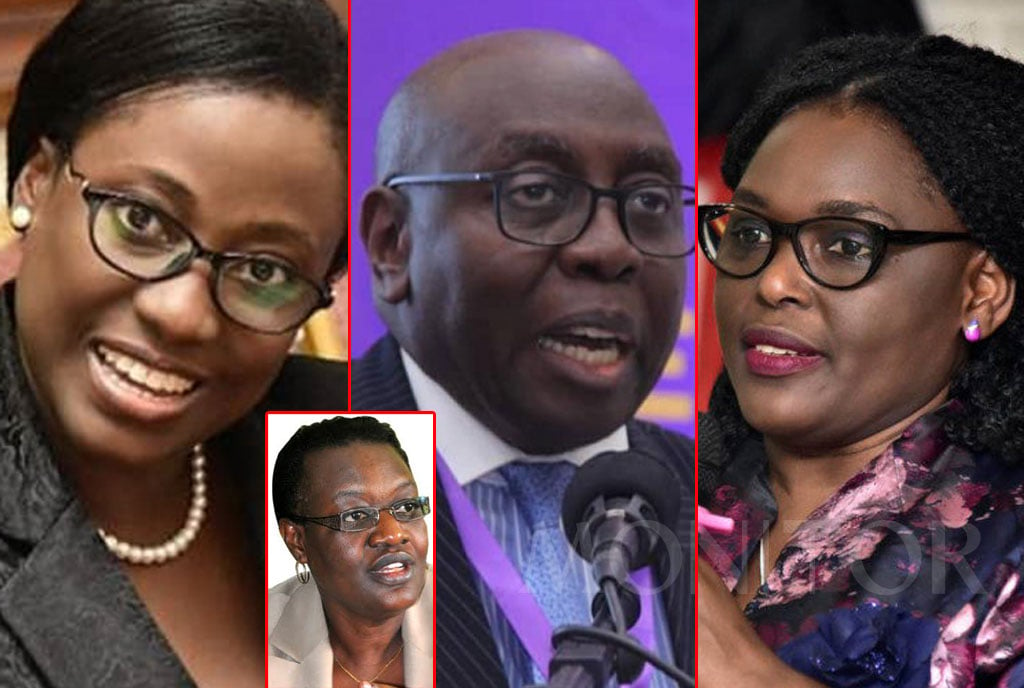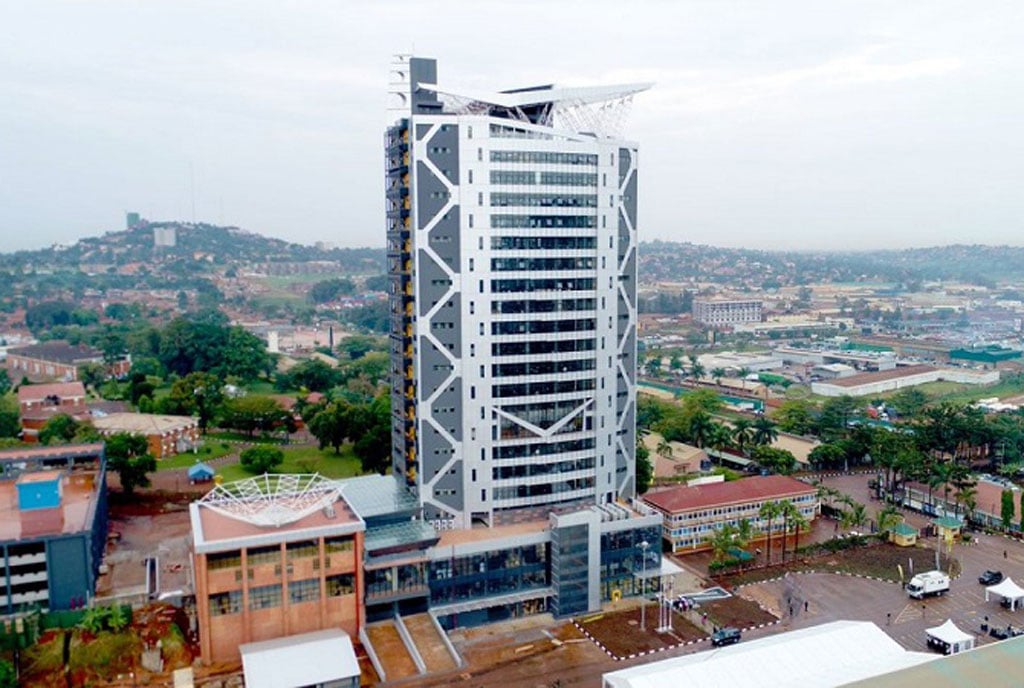
A protester attends a demonstration against the Finance Bill 2024/2025 in Nairobi, Kenya, on June 25, 2024. PHOTO | REUTERS
The violent protests on Tuesday in Kenya over a controversial tax Bill have yet again cast a pall on landlocked Uganda, Rwanda, South Sudan, and eastern DR Congo, which are over-reliant on the Northern Corridor route through Nairobi from the Indian Ocean Mombasa port.
Kenya has a long history of mass protests, but since the 2007 general elections which pitted incumbent Mwai Kibaki against Raila Odinga of the Orange Democratic Movement, whenever the country sneezes, her landlocked neighbours catch a cold in the form of disrupted supply chains, particularly of petroleum products, sometimes leading to rise in prices. Trade, too, is adversely affected.
In the ensuing violence 17 years ago, Uganda-bound cargo trucks and passenger vehicles were targeted and vandalised.
Sections of the meter-gauge railway leading to Uganda were uprooted, and anti-Uganda sentiments spread throughout parts of Kenya until the African Union/UN-backed national consensus took effect.
Since then, particularly Ugandan truck drivers have feared foraying inside Kenya during times of unease out of fear of being targeted due to the long-held suspicion of the Kampala regime remotely meddling in Kenyan politics.
President Museveni, in power for 38 years, is celebrated in Kenya, according to diplomatic sources, for his sometimes no-holds-barred stance against the United States and its European allies but at the same time is also viewed suspiciously for his unrelenting push for the East African Community Federation.
The protests on Tuesday climaxed into chaos, with protestors storming parliament after it passed the Finance Bill, 2024, that sought to introduce an array of taxes and levies for Kenyans.
On Wednesday afternoon, President William Ruto backed down on signing the controversial Bill into law. Even then, it remained unclear when calm would return as pockets of peaceful protests were reported in some parts yesterday.
Since Monday when the protests started taking a twist, Kenya-bound trucks stretched for several kilometres on the Ugandan side.
Currently, Uganda heavily relies on Northern Corridor for more than 80 percent of its in-bound and out-bound cargo, nearly all of it by road.
After the events of 2007, the government started pondering the multi-modal transport (composed of railway and inland waterways) Southern Corridor in Tanzania stretching from Mutukula border in Rakai District to the port of Dar es Salaam.
The southern route follows Tanzania’s central railway, which runs from Dar es Salaam port through Dodoma to Tabora and finally to Mwanza port on the southern shores of Lake Victoria. From Mwanza, wagons were then loaded onto ferries docking at the Jinja pier or Port Bell in Luzira
The feasibility study in 2015 by the Japanese engineering consultancy firm, Toyota Tsusho Corporation, for a least-cost route for Uganda to construct a duct to transport its waxy crude oil to the international market—the East African Crude Oil Pipeline (Eacop)—further accentuated the Central Corridor, to Tanga Port, about 300km, north of Dar es Salaam.
Both routes, diplomats working on regional integration in the Ministry of Foreign Affairs told Daily Monitor, are yet to catch fire “due to the long distances.”
“The Southern Corridor is particularly active, but it is the private sector that has to lead its way,” a senior official said, adding: “It is less crowded and has less bureaucracy but traders look at the cost and distance and avoid it. So in effect, transport corridors are dependent on costs.”
Tanzania option
Previously, Tanzania also slapped a $500 levy per 100km—for road repairs and maintenance— on Ugandan cargo trucks plying the 1,485km Mutukula-Dar-es Salaam route. This was slashed to $10 during President Samia Suluhu’s visit to Uganda in May 2022. However, several roadblocks remain in the way.
In a rejoinder, State Minister for Regional Affairs John Mulimba indicated: “It is not true that we only think of an alternative when Kenya is in a crisis. The Dar es Salaam route has been viable for a very long time.”
“The governments of Uganda and Tanzania have been facilitating the movement of goods and human via the Southern Corridor but in economics there is a list of preferences, and most times plans never become actual,” he added.
In the 1960s, then Tanzania President Julius Nyerere and his Ugandan counterpart Milton Obote mooted the idea of Uganda leasing Tanga Port from Tanzania as an alternative access route to the sea. The plan, however, died in its infancy with the overthrow of Obote in 1971.
Tanzania, as an alternative route, further lost steam with the slow death of the rail-water transport starting in the mid-1990s with the maladministration of Uganda Railways Corporation (URC) .
After Kampala and Nairobi peppered over the cracks, in 2008 they agreed to construct a brand new railway line snaking from Mombasa to Kampala with future links to Kigali and Juba. The arrangements for the much-vaunted Standard Gauge Railway were subsequently concretised in 2012.
While the plan was to borrow money jointly from China’s Exim Bank for the regional project, Nairobi started parallel negotiations shortly after and acquired $3.8b for the Mombasa to Nairobi section, and later the 120km line from Nairobi to Naivasha at $1.7b.
This was to be followed by the 266km railway line from Naivasha to Kisumu port for $3.6b and 107km line connecting to Malaba at a cost of $1.7b as a precursor for Uganda starting its own 323km Malaba-Kampala SGR, which plans ran out of steam but were revitalised early this year.
Uganda-tanzania ties
On the other hand, Uganda and Tanzania continue to cooperate on key infrastructure, including the $4b Eacop, and the 130km Tabora/249km Isaka-Mwanza electric SGR line winding at the Lake Victoria Mwanza port to facilitate cargo haulage to Uganda via Port Bell or the proposed Bukasa port. Officials say this infrastructure will give impetus to the transport corridors in Tanzania in the long run.







